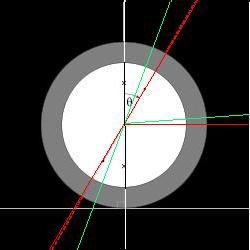Harvard
Jul 09, 2013Explorer
Frame Angle vs Front End Caster
It is my belief that raising the rear end by 1 degree (frame angle) will reduce the front end caster by 1 degree.
The problem is interperting this Ford Frame Angle link.
If we have a "specified caster" of +4.5 degrees, a "frame angle" of 0.0 degrees and we measure a caster of +4.5 degrees then we are on spec.
Now, if we were to raise the rear end to give us a "frame angle" of +1.0 degrees would we not have a "measured caster" of +3.5 degrees?
So, the logic used in this link tells us "correctly" to get back to the "specified caster" we add the "frame angle" to the "measured caster" and we get back to specification. BUT, then it goes on to say the "changed required = NONE" :h
What the heck? We started out with +4.5 degrees of caster, raised the rear end, and ended up with +3.5 degrees and that is "good to go"??? Where have I gone wrong?
The problem is interperting this Ford Frame Angle link.
If we have a "specified caster" of +4.5 degrees, a "frame angle" of 0.0 degrees and we measure a caster of +4.5 degrees then we are on spec.
Now, if we were to raise the rear end to give us a "frame angle" of +1.0 degrees would we not have a "measured caster" of +3.5 degrees?
So, the logic used in this link tells us "correctly" to get back to the "specified caster" we add the "frame angle" to the "measured caster" and we get back to specification. BUT, then it goes on to say the "changed required = NONE" :h
What the heck? We started out with +4.5 degrees of caster, raised the rear end, and ended up with +3.5 degrees and that is "good to go"??? Where have I gone wrong?
